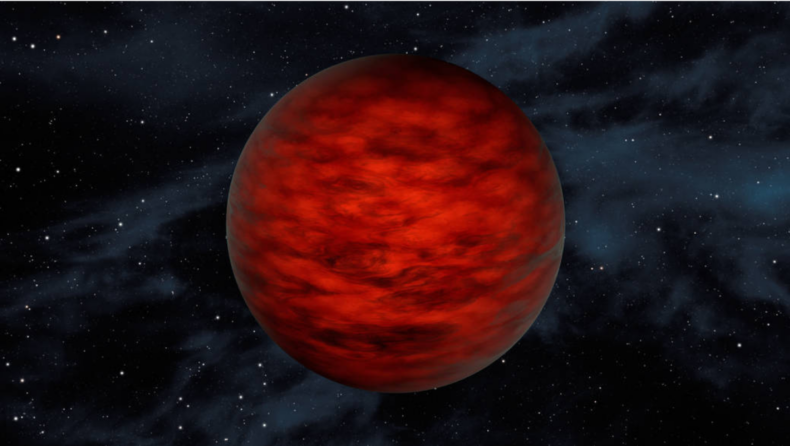In a ground-breaking feat, for the first time, multiple new systems with brown dwarf companions on wide orbital separations have been announced in one go.
- A team of researchers led by Mariangela Bonavita and Clémence Fontanive directly imaged four new brown dwarfs.
- The Study is recently published in the journal Monthly Notices of the Royal Astronomical Society MNRAS.
- Innovative technique of observing only stars that show indications of an additional object in their system was used.
Brown dwarfs are mysterious astronomical objects that straddle the line between stars and planets. Thus, filling the gap between the heaviest planets and the lightest stars, with a blend of stellar and planetary characteristics. Due to this hybrid nature, these peculiar objects are crucial to improve our understanding of both stellar and planetary populations. However, only 40 brown dwarfs could be imaged around stars in almost three decades of searches. An international team directly imaged a remarkable four new brown dwarfs using a new innovative search method. They were led by researchers from the Open University and the University of Bern.
Brown dwarfs orbiting a parent star that are too close to their star are hidden by its brightness. On the other hand, those that orbit from sufficiently far away are particularly valuable as they can be directly photographed. This provides scientists with a unique opportunity to study the details of the cold, planet-like atmospheres of brown dwarf companions.
There have been exceptional efforts in the development of new observing technologies and image processing techniques. However, direct detections of brown dwarf companions to stars have remained rather sparse. In the last three decades of searches, only around 40 systems have been imaged. Researchers led by Mariangela Bonavita and Clémence Fontanive directly imaged four new brown dwarfs. They report this in a study recently published in the journal Monthly Notices of the Royal Astronomical Society MNRAS. Mariangela Bonavita is from the Open University. Clémence Fontanive is from the Center for Space and Habitability (CSH) and the NCCR PlanetS at the University of Bern. For the first time, multiple new systems with brown dwarf companions on wide orbital separations have been announced together.
Novel search method
Wide-orbit brown dwarf companions are rarely spotted. Mariangela explains how detecting them directly poses major technical challenges since the host stars completely blind their telescopes. Until now, most surveys conducted have been blindly targeting random stars from young clusters. Clémence Fontanive discusses an alternative approach to increase the number of detections. It comprises observing only stars that show indications of an additional object in their system. As an example, let’s consider a companion, whether it is a star, a planet or something in between. The way a star moves under the gravitational tug of a companion can be an indicator of the existence of that companion.
COPAINS tool developed by the team predicts the types of companions that could be responsible for observed anomalies in stellar motions. Applying this tool, the team carefully selected 25 nearby stars that seemed promising for the direct detection of hidden, low-mass companions. This was based on data from the Gaia spacecraft of the European Space Agency (ESA). Thereafter, the SPHERE planet-finder at the Very Large Telescope in Chile was used to observe these stars. In this way, they successfully detected ten new companions with orbits ranging from Jupiter to beyond that of Pluto. It includes five low-mass stars, a white dwarf (a dense stellar remnant), and a remarkable four new brown dwarfs.
Dramatic rise in detection rate of Brown Dwarf Companions
The findings resulting from the survey significantly advances the number of known brown dwarfs orbiting stars from large distances. Thus, it led to a significant rise in detection rate compared to any previous imaging survey. At present, this approach is mainly limited to signatures from brown dwarf and stellar companions. However, future phases of the Gaia mission are expected to push these methods to lower masses. This will allow for the discovery of new giant exoplanets. Fontanive points out that their program also demonstrates the power of these search strategies. This is in addition to having so many new discoveries in one go.
When combining space and ground-based facilities to directly image exoplanets, the whole is greater than the sum of its parts. This belief maintained by the researchers is what made these results possible. Mariangela expresses hope that this will be the foundation of a new era of synergy between different instruments and detection methods.
While knowledge about brown dwarfs is essential to build our understanding of planets and stars, it has been a challenge to spot them accurately. As a result, there have been only 40 observations of brown dwarfs in the past 3 decades. New innovative search method has led to direct discovery of four new brown dwarfs in one go. It brings in hope for a rise in the detection rate. The Study is recently published in the journal Monthly Notices of the Royal Astronomical Society MNRAS.













